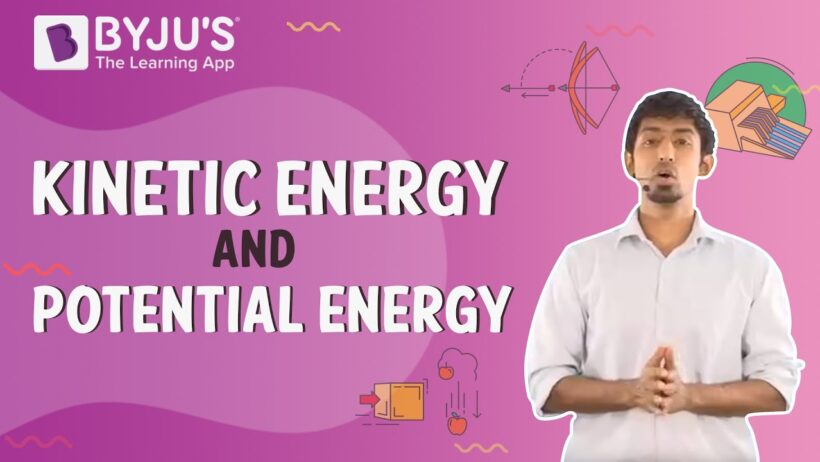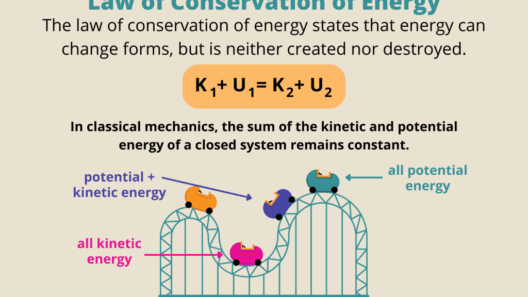When pondering the physical world, one might stumble upon springs—those ubiquitous coiled mechanisms we utilize in diverse applications, from mattresses to machinery. The fascinating interplay of forces within these metal coils beckons the question: Is spring potential energy conservative or nonconservative? To disentangle this inquiry, we shall delve into the realms of energy conservation, mechanical systems, and the intricate qualities of potential energy.
The intriguing concept of potential energy serves as a cornerstone in the study of physics. It embodies the energy stored in an object due to its position or configuration, acting as a reservoir of potential kinetic energy waiting to be unleashed. In mathematics, potential energy (PE) can express itself in various forms, but for springs, it is most elegantly captured by Hooke’s Law.
Hooke’s Law articulates that the force exerted by a spring is directly proportional to its displacement from its equilibrium position. Mathematically, it is represented as F = -kx, where F is the restoring force, k is the spring constant, and x is the displacement. This foundational law propels us to the next stage of our exploration: the formula for spring potential energy.
The potential energy stored in a spring is given by the equation PE = ½ kx². This equation speaks volumes about the spring’s nature. The energy depends quadratically on the displacement; thus, even minor alterations in displacement yield significantly varying amounts of stored energy. This characteristic evokes an image of a tightly coiled serpent, coiling tighter with every pull, ready to spring forth with considerable vigor.
The classification of energy as either conservative or nonconservative revolves around its behavior within isolated systems. Conservative forces—such as gravitational and elastic forces—possess the intrinsic quality of energy conservation: the work done by these forces can be fully recovered. In contrast, nonconservative forces, like friction, dissipate energy, transforming it into heat and rendering it unavailable for mechanical work.
Diving deeper into the realm of spring potential energy, one may assert that it exhibits conservative characteristics. When a spring stretches or compresses, the work done in displacing it from its equilibrium is stored as potential energy. Should the spring return to its original position, this energy is released in a controlled manner, ready to perform work. The total mechanical energy of the system—comprising both kinetic and potential energy—remains conserved during this oscillation.
Consider a child on a swing. Initially, at the highest point of the swing arc, the potential energy is most substantial, waiting to be transformed into kinetic energy as the swing descends. The behavior of springs is analogous: stationed at rest, they hold potential energy diligently in anticipation. Once released, like the swing darting downward, that stored energy transitions to kinetic energy, propelling the object forward. The spring miraculously retains this equilibrium—a defined balance of energy ready to oscillate between two forms.
Yet, to scrutinize springs solely through the lens of conservation presents an incomplete picture. While springs indeed showcase conservative properties, they can interact in arrangements that introduce nonconservative effects. For instance, in systems where energy losses occur due to air resistance or internal friction among coil layers, the process reveals the dualistic nature of springs: their malleability to act as conduits of both conservation and dissipation.
Another metaphorical avenue to explore is that of a grand orchestra, with springs as musicians tapping their potential. In an ideal world, each note resonates harmoniously, reflecting the conservative energy spectrum where every ounce of strength returns to the conductor—energy conserved, music preserved. Yet, in the cacophony of practical applications, instruments might falter, notes lost—energy gone to waste in turbulent dynamics, revealing the nonconservative timbre of life.
In essence, springs encapsulate a microcosm of our broader understanding of energy within physical systems. They illustrate the beauty of conservation laws, while simultaneously exposing the intricacies of mechanical behavior in real-world settings. The exploration of spring potential energy invites reflection on the principles of physics and their significance in everyday phenomena.
The journey into the nature of spring potential energy unfolds a sophisticated tapestry woven with strands of conservation principles and dynamic systems. Through careful examination, one appreciates that springs are not merely mechanisms but harbingers of energy principles that govern our universe. They serve as a reminder that while energy thrives in conservation, the reality of our world often introduces complexities that require navigating the fine line between the ideal and the practical.
Ultimately, the question of whether spring potential energy is conservative or nonconservative distills into a rich narrative that speaks to the very essence of physical laws. Springs elevate the energy conversation, cultivating an understanding of vitality, dynamism, and the perpetual dance of forces. Such is the allure of springs—both yielding and restrained, releasing energy gracefully while inviting inquiry into the depths of conservation and the complexities of energy flow.








